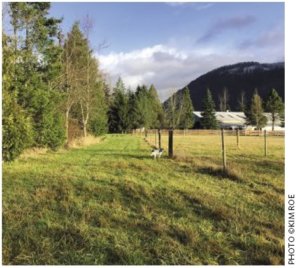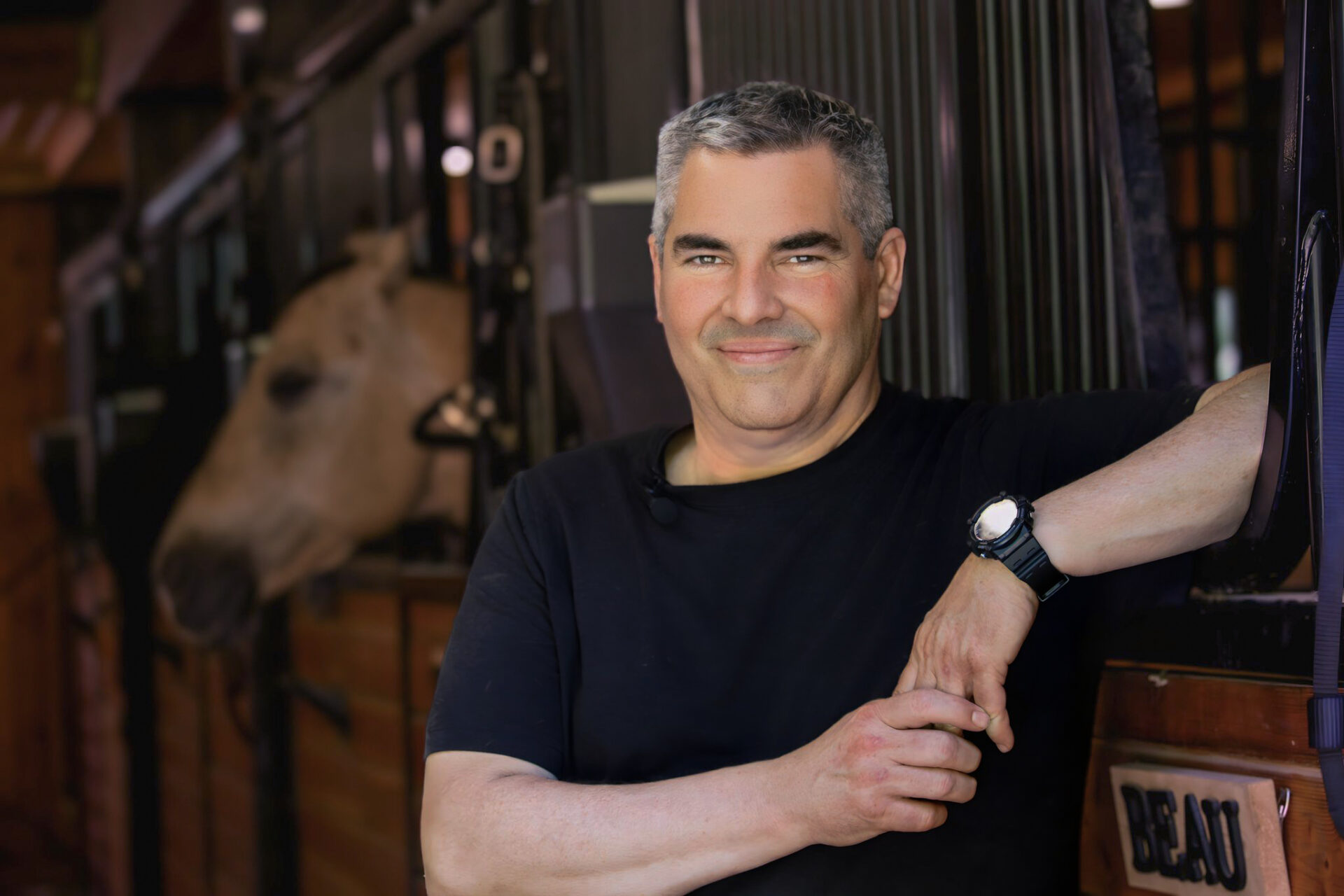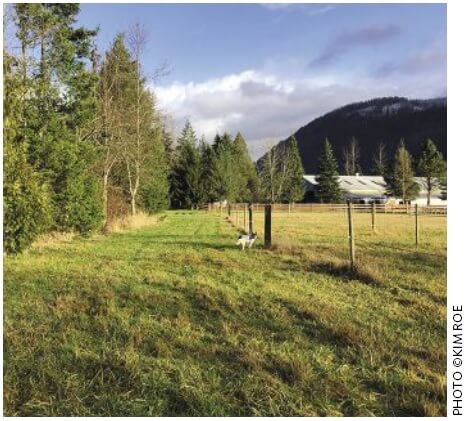What’s Good for Salmon is Good for Horses
By Michael Hipp
We’ve seen Western movies where thousands of cows are driven across a river by cowboys on horseback keeping them all in line. In these movies the rivers lack something we have here in the Pacific Northwest that makes this region so unique—salmon.

These days most responsible ranches have changed their ways so that their ranch—and their way of life—can be passed on in a healthy way to future generations. Today we understand the importance of preserving habitat for other species. One of the most prominent species in need of habitat preservation in our region is salmon.
Why and How We Protect Salmon
Salmon are unique among fish in that they are anadromous, meaning they hatch in fresh water, migrate to salt water, and then return to fresh water to reproduce. It’s their reproduction process that makes them vulnerable and makes protecting their habitat so important.
When salmon reproduce, they lay eggs in a small depression called a “redd” that they create in the gravel of a stream or river bottom. If livestock have access to the river, their activities can erode the riverbank soil which enters the stream and slowly settles to the bottom and covers up the eggs in the redds. When this happens, the eggs lose their ability to absorb oxygen from the passing water and literally suffocate. Also, the sediment fills in the spaces available in the gravel that provide protection for the eggs, and loss of redds can occur as well.
Livestock also leave manure either directly in the stream or on the bank that can be washed into the stream during rainstorms. Manure breaks down and acts like eroding soil and causes other water-quality problems. Also, the action of livestock walking in the stream can disturb redds and sometimes crush the eggs directly.
Protecting vegetation along a stream and planting buffers of native plants, trees, and shrubs is also crucial to protecting aquatic life. Streamside vegetation provides shade to cool the water, food for insects that fish feed on, erosion control, and habitat along the banks.
Protecting Salmon Benefits You Economically
What’s the benefit of protecting salmon, aside from ensuring the survival of a species that is iconic to the Pacific Northwest? There are many benefits — a lot of them economic.
Evidence indicates that if salmon runs were restored to their historic levels, the positive economic impact of increased recreational fishing alone would be approximately $200 per fish.1 Each additional fish caught commercially would have a dockside value increase of over $70 per fish.2
Protecting Salmon Protects Your Horse
Fencing livestock out of streams to protect salmon protects your pocketbook, but it also protects your horse. Whenever I am invited onto a property with an active stream accessible by livestock, I always ask, “Do you know where this water is coming from?”
I have traced water sources on properties back to polluted streams, residential parking lots and heavily traveled highways. All of these contain things that can adversely affect the health of a horse, if not directly poison them. Even if the source of the water seems like a nice, clear mountain glacier, there are still protozoa and other parasites that can be transmitted via water into your horse’s system. Take the safe option and fence horses off the water entirely.
Seasonal Streams Count
Fencing to protect salmon and your horse is not limited to just fencing off active streams. Streams that are only active during the rainy months, or what folks call “seasonal” streams, count as well. Allowing livestock access to dry stream beds creates the erosion of soil that flows downstream during rain events and fills streams and rivers with sediment that suffocates salmon eggs. It also reduces the vegetation that helps keep any sediment in place and out of the connected streams and rivers. So, even though there isn’t any water present in the dry months, fencing those seasonal streams from livestock is just as important in the overall picture.
Keep in mind that small tributaries that run year-round but don’t appear to have salmon are important to help maintain clean, cool water farther down in the watershed. If the stream on your property doesn’t appear to have salmon, it’s still important to protect it from livestock and maintain a healthy buffer.
Sources
1. Nieme, Whitelaw, et al “Salmon, Timber, and the Economy”, ECONorthwest for Pacific Rivers Council. October 1999.
2. Radtke, H and S. Davies “An Estimate of the Asset Value of Historic Columbia River Salmon Runs”, The Institute for Fisheries Resources. December 1995.

Michael is a lifelong student of the horse, from his childhood in Texas ranch country to his work with conservation districts all over Washington State protecting natural resources while also improving the lives of horses and their human companions. Hipp Equine Consulting serves horse owners across the country as well as conducting workshops at local stables on property management, horse behavior, chore management, and many other practical topics.
hippequine@outlook.com
(425)-314-9980


